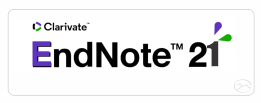Envíos
El registro y el inicio de sesión son necesarios para enviar elementos en línea y para comprobar el estado de los envíos recientes. Ir a Iniciar sesión a una cuenta existente o Registrar una nueva cuenta.
Lista de comprobación para la preparación de envíos
Como parte del proceso de envío, los autores/as están obligados a comprobar que su envío cumpla todos los elementos que se muestran a continuación. Se devolverán a los autores/as aquellos envíos que no cumplan estas directrices.
- El envío no ha sido publicado previamente ni se ha sometido a consideración por ninguna otra revista (o se ha proporcionado una explicación al respecto en los Comentarios al editor/a).
- El archivo de envío está en formato OpenOffice, Microsoft Word, RTF o WordPerfect.
- Siempre que sea posible, se proporcionan direcciones URL para las referencias.
- El texto tiene interlineado sencillo; 12 puntos de tamaño de fuente; se utiliza cursiva en lugar de subrayado (excepto en las direcciones URL); y todas las ilustraciones, figuras y tablas se encuentran colocadas en los lugares del texto apropiados, en vez de al final.
- El texto se adhiere a los requisitos estilísticos y biliográficos resumidos en las Directrices del autor/a, que aparecen en Acerca de la revista.
Declaración de privacidad
Los nombres y direcciones de correo electrónico ingresados en el sitio de la revista Amazonia Investiga se utilizarán exclusivamente para los fines indicados en esta revista y no estarán disponibles para ningún otro propósito ni para ninguna otra parte.Los nombres y direcciones de correo electrónico ingresados en el sitio de la revista Amazonia Investiga se utilizarán exclusivamente para los fines indicados en esta revista y no estarán disponibles para ningún otro propósito ni para ninguna otra parte.
Los datos recopilados de usuarios registrados y no registrados de esta revista entran dentro del alcance del funcionamiento estándar de las revistas revisadas por pares. El equipo editorial de la revista recopila dicha información sólo en la medida en que sea necesaria o apropiada para cumplir el propósito de la interacción del visitante con la revista. Incluye información que posibilita la comunicación para el proceso editorial; se utiliza para informar a los lectores sobre la autoría y edición del contenido y permite recopilar datos agregados sobre el comportamiento de los lectores.
Los datos que ayudarán a desarrollar esta plataforma de publicación se pueden compartir con su desarrollador Public Knowledge Project de forma anónima y agregada, con las excepciones apropiadas, como las métricas de los artículos. Los datos no serán vendidos por esta revista ni por PKP ni serán utilizados para fines distintos a los aquí establecidos. Los datos que ayudarán a desarrollar esta plataforma de publicación se pueden compartir con su desarrollador Public Knowledge Project de forma anónima y agregada, con las excepciones apropiadas, como las métricas de los artículos. Los datos no serán vendidos por esta revista ni por PKP ni serán utilizados para fines distintos a los aquí establecidos.
Los autores publicados en esta revista son responsables de los datos de sujetos humanos que figuran en la investigación aquí reportada.
Quienes participan en la edición de esta revista buscan cumplir con los estándares de la industria para la privacidad de datos, incluida la disposición del Reglamento General de Protección de Datos (GDPR) de la Unión Europea para los “derechos de los interesados” que incluyen (a) notificación de incumplimiento; (b) derecho de acceso; c) el derecho al olvido; (d) portabilidad de datos; y (e) privacidad por diseño. El RGPD también permite el reconocimiento del “interés público en la disponibilidad de los datos”, que tiene una importancia particular para quienes participan en el mantenimiento, con la mayor integridad posible, del registro público de las publicaciones académicas.
Los autores publicados en esta revista son responsables de los datos de sujetos humanos que figuran en la investigación aquí reportada.
Política de cookies
Una cookie es un pequeño archivo de texto que un sitio web guarda en su computadora o dispositivo móvil cuando visita el sitio. Permite que el sitio web recuerde sus acciones y preferencias (como inicio de sesión, idioma, tamaño de fuente y otras preferencias de visualización) durante un período de tiempo, para que no tenga que volver a ingresarlas cada vez que regrese al sitio o navegar de una página a otra.
Los visitantes del sitio web de Amazonia Investiga que no deseen que se coloquen cookies en sus computadoras deben configurar sus navegadores para que rechacen las cookies antes de utilizar el sitio web de Amazonia Investiga, con el inconveniente de que ciertas características del sitio web pueden no funcionar correctamente sin la ayuda de las cookies.









